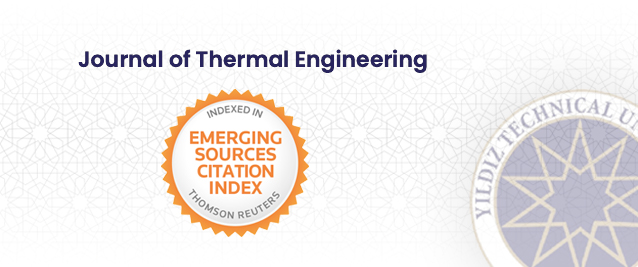Abstract
ORC cycle is one of the most efficient technologies for the utilization of low-grade heat. ORC systems cover a wide range of heat sources and power outputs. Apart from increasing the overall efficiency, CHP systems contribute to the decentralization of energy production, the conservation of primary fuel, the reduction of the emission of greenhouse gasses and the re-duction of the cost to the final consumer. This justifies the research activity around CHP-ORC
systems. In the present paper, a steady-state thermodynamic model for a 50 kWel biomass microCHP-ORC was developed and four candidate fluids were selected: R124, isobutane, R245fa and isopentane. The multi-objective optimization under supercritical conditions was performed using the genetic algorithm. The thermal efficiency, the exergy efficiency and the total heat exchanger surface were selected as single objectives. The evaporation temperature and pressure and the pinch point temperature differences at the heat exchangers were selected as decision variables. Careful examination of the optimal results revealed a systematic ten-dency for high evaporation temperatures and pressures and low recuperator pinch point tem-perature differences. Recuperation was found beneficial in many aspects, especially at higher evaporation temperatures. Also, the use of cogeneration leads to overall system efficiencies that surpass 90%, while simultaneously saving at least 20% fuel. Lastly, isopentane was found to be the best-performing fluid.























